Digital Poster
Prostate MRI Innovations Beyond mpMRI
ISMRM & ISMRT Annual Meeting & Exhibition • 10-15 May 2025 • Honolulu, Hawai'i

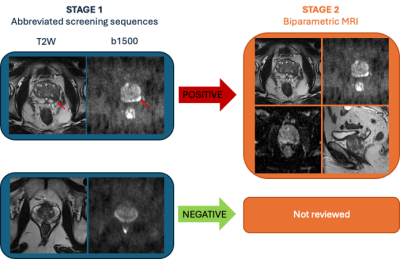 |
Computer Number: 17
2277. A
Novel ‘Stage-Gated’ Approach for Reporting Prostate Screening
MRI: “Is Less More?”
N. Thorley, G. Brembilla, F. Giganti, T. Barrett, T. Parry,
D. Eldred-Evans, N. Mayor, A. Lamb, P. Hubbard Cristinacce,
F. Gong, H. Tam, H. Sokhi, A. Padhani, C. Moore, H. Ahmed,
S. Punwani
University College London, London, United Kingdom
Impact: A
‘stage-gated’ reporting approach for prostate MRI screening
improves the positive predictive value (PPV) compared to
Likert/PI-RADS scoring while maintaining comparable cancer
detection rates. This approach may prove valuable in
reducing unnecessary biopsies in future prostate cancer
screening trials.
|
|
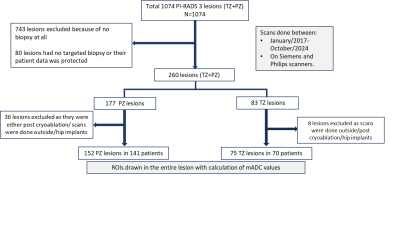 |
Computer Number: 18
2278. Risk
Stratification of prostate imaging reporting and data system
(PI-RADS 3) lesions based on mean ADC values.
T. Kaur, Y. Jiang, N. Seiberlich, H. Hussain, S. Wells, J.
Ramirez, J. Neshewat, V. Gulani
University of Michigan, Ann Arbor , United States
Impact: The results show that mean ADC values could help
differentiate between cancers and non-cancers in PZ and TZ
PI-RADS 3 lesions.
|
|
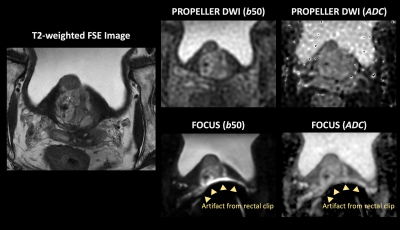 |
Computer Number: 19
2279. Assessing
the Feasibility of PROPELLER DWI for Prostate Imaging in
Patients with Metal Implants
Y-C Chen, C-Y Yeh, Y-C Chen, C-W Lee, C-C Shieh, C-Y Lin,
K-L Liu, Y-C Chang
National Taiwan University Hospital and National Taiwan University College of Medicine, Taipei, Taiwan
Impact: This study indicates reduced distortion of
tissues near metal implants in PROPELLER-DWI and a strong
linear correlation of ADC values between PROPELLER-DWI and
EPI-DWI, suggesting PROPELLER-DWI would be valuable for the
diagnosis of prostate cancer in patients with metal
implants.
|
|
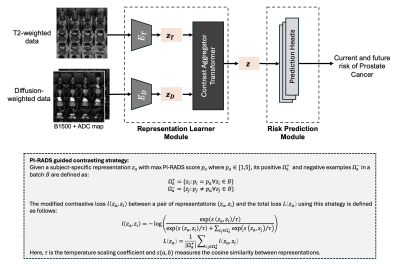 |
Computer Number: 20
2280. Prostate
cancer risk assessment models for bi-parametric MRI in a large
patient population
L. Umapathy, P. Johnson, T. Dutt, A. Tong, S. Chopra, H.
Chandarana, D. Sodickson
NYU Grossman School of Medicine, New York, United States
Impact: Automated AI-based risk-assessment frameworks
can aid personalized and objective decisions for AS.
Patients with higher risks can be managed more aggressively
with imaging and biopsy compared to those with lower risks,
potentially avoiding overtreatment and overdiagnosis of
prostate cancer.
|
|
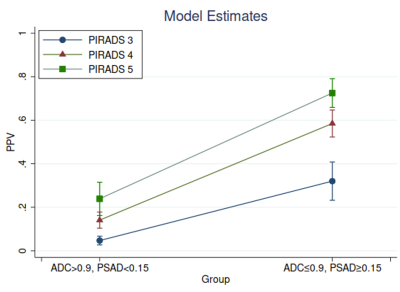 |
Computer Number: 21
2281. Factors
influencing variability in interpretation of prostate MRI
S. J. C. Soerensen, J. Rosenberg, Z. Franks, M. Rusu, R.
Fan, G. Sonn, P. Ghanouni
Stanford University School of Medicine, Stanford, United States
Impact: Incorporating ADC value and PSA density into
PI-RADS scoring could improve diagnostic accuracy of
prostate mpMRI interpretation, ultimately enhancing patient
care.
|
|
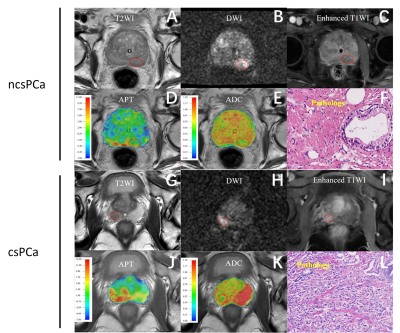 |
Computer Number: 22
2282. Added
value of amid proton transfer weighted MRI to PI-RADS v2.1 in
differentiating clinically significant prostate cancer
Z. Gong, Y. Ye, Y. Peng, Z. Liu, H. Ying, J. Dai, L. Gong
The Second Affiliated Hospital, Jiangxi Medical College, Nanchang University, Nanchang, Jiangxi, China
Impact: Accurately diagnosing csPCa patients is
important for treatment selection. APT weighted MRI can
provide significantly added value to PI-RADS v2.1 for
identifying csPCa. Therefore, the application of APT
weighted MRI would be beneficial for prostate cancer
assessment and management.
|
|
 |
Computer Number: 23
2283. Comparing
Performance of a New 50-Channel Pelvic Coil to that of the
30-Channel Anterior Array Coil for MRI of the Prostate
M. Medved, S. Huang, A. Yousuf, R. Engelmann, S. Kalidoss,
A. Hamimi, C. Follante, Y. Stickle, F. Robb, A. Guidon, A.
Oto, G. Lee
The University of Chicago, Chicago, United States
Impact: The 50-channel pelvic coil demonstrated higher
image quality, SNR, and CNR and lower artifact levels in
DWI/ADC and T2-weighted images, the most diagnostic
sequences for prostate MRI. This can improve detection of
prostate cancer and confidence of extraprostatic extension
evaluation.
|
|
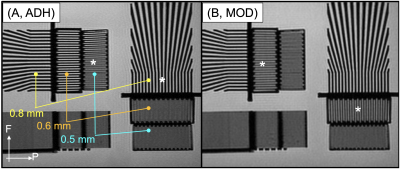 |
Computer Number: 24
2284. Modified
in-plane resolution with shorter acquisition time while
maintaining high image quality T2-weighted prostate MRI
S. Riederer, E. Borisch, A. Froemming, R. Grimm, S.
Hassanzadeh, A. Kawashima, N. Takahashi, J. Thomas
Mayo Clinic, Rochester, United States
Impact: Modification of the PI-RADS minimum technical
standard parameters in prostate T2-weighted imaging of 0.4mm
frequency × 0.7mm phase in-plane resolution to allow
equivalent pixel area allows reduction in acquisition time
and improved image quality.
|
|
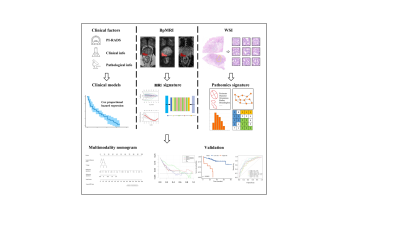 |
Computer Number: 25
2285. The
Value of a Clinical-Radiomics-Deep Learning-Pathomics Fused
Models for Biochemical Recurrence Prediction After Radical
Prostatectomy
C. Hu, X. Qiao, X. Wang, J. Bao, Y. Song, J. Zhang, Z. Zhao
The First Affiliated Hospital of Soochow University, Suzhou, China
Impact: The multi-modality fused model incorporating
clinical variable, radiomics model, MRI DL model, pathomics
model was better than all single-modality models. Our model
could assess the prognosis of patients with PCa after
surgery, providing strong support for formulating subsequent
treatment plans.
|
|
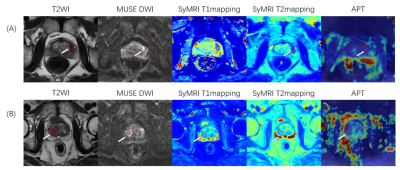 |
Computer Number: 26
2286. Diagnostic
value of multiparameter MRI Based on APT Imaging, Synthetic MRI,
and MUSE DWI in Differentiating Benign and Malignant Prostate
Lesions
Z. Zhao, C. Hu, J. Shi, X. Qiao, Q. Zhang, X. Wang
The First Affiliated Hospital of Soochow University, Suzhou, China
Impact: This study demonstrates the clinical value of
using multiparametric MRI, incorporating Synthetic MRI, APT,
and MUSE DWI, for improving differentiation between benign
and malignant prostate diseases.
|
|
 |
Computer Number: 27
2287. Establishing
significant correlations between multiparametric magnetic
resonance histology (MRH) and cytometric features in prostate
cancer
S. Blocker, W. Austin, J. Cook, E. Howington, J. Huang, G.
A. Johnson
Duke University, Durham, United States
Impact: This research provides quantitative links
between magnetic resonance histology and ground-truth
histopathology in prostate cancer. Not only will this
improve how we implement MRH for 3D pathology applications,
we will also improve our interpretation of clinical prostate
MRI.
|
|
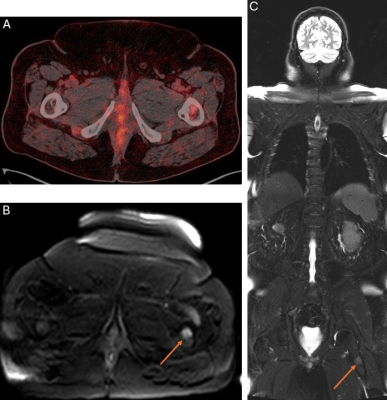 |
Computer Number: 28
2288. Disease
Detection Rate of Combination Ga-68 PSMA-PET/CT and Whole-Body
MRI in Biochemical Recurrence After Prostatectomy
S. Sridhar, P. Patel, Z. Abouelfetouh, S. Chiang, R.
Satkunasivam, D. Kaushik, M. Brooks, B. Miles, D. Martin, E.
Efstathiou, N. Gupta
Houston Methodist Research Institute, Houston, United States
Impact: Our work demonstrates the added value of MRI as
an addition to PET/CT scans in the context of BCR, as well
as some of the limitations of PET/CT alone. Further research
needs to be done in a larger patient population.
|
|
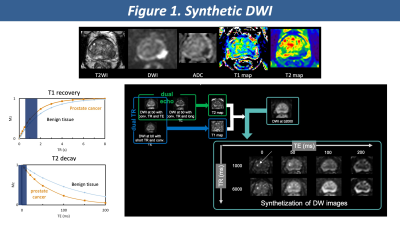 |
Computer Number: 29
2289. Evaluating
Synthetic DWI for Prostate Cancer Detection: Optimal TR
Selection and Diagnostic Advantages over Conventional DWI
A. Higaki, M. Takeuchi, Y. Kojima, Y. Ueda, T. Maruhisa, Y.
Fukukura, A. Yamamoto, T. Tamada
Kawasaki Medical School, Okayama, Japan
Impact: Optimized synthetic diffusion-weighted imaging
improves prostate cancer diagnostic accuracy, enhancing
lesion detection and reducing false positives compared to
conventional methods. This advancement may minimize
unnecessary biopsies and serve as a reliable tool in
prostate cancer management.
|
|
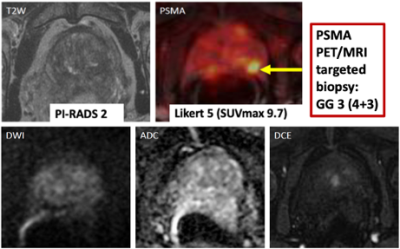 |
Computer Number: 30
2290. 18F-DCFPyL
PSMA PET/MRI improves detection of clinically significant
prostate cancer in men on active surveillance: Results from a
Phase II trial
S. Wells, E. Lawrence, M. Bigarella, J. Eickhoff, D.
Jarrard, S. Cho
University of Michigan, Ann Arbor, United States
Impact: Imaging and clinical predictive models that
include PSMA PET/MRI may identify low and intermediate-risk
men who could potentially avoid prostate biopsy and
coincident morbidity, as well as increase the detection
rates of csPC missed by MRI-biopsy alone.
|
|
 |
Computer Number: 31
2291. Age
Dependency of Diffusion-Relaxation Coupling in the Prostate
A. Yen, E. Bhuiyan, Q. Luo, K. Sun, G. Dan, X. Zhou
University of Illinois Chicago, Chicago, United States
Impact: This study demonstrates the feasibility of using
multi-readout DWI sequences to enable time-efficient
investigation of age dependency of LWI parameters, providing
valuable information for using LWI to evaluate prostate
lesions.
|
|
 |
Computer Number: 32
2292. Urinary
bladder as an in vivo reference for quality assurance of
apparent diffusion coefficient for prostate MRI
L. Lawrence, R. Chan, M. Al Sharji, R. Bhayana, A. Lau, M.
Haider
University of Toronto, Toronto, Canada
Impact: The urinary bladder serves as a reference sample
for ADC, which will be necessary for quality assurance of
ADC in prostate cancer diagnosis. Whether prostate ADC
normalization by bladder ADC reduces interpatient
variability can be investigated.
|
The International Society for Magnetic Resonance in Medicine is accredited by the Accreditation Council for Continuing Medical Education to provide continuing medical education for physicians.